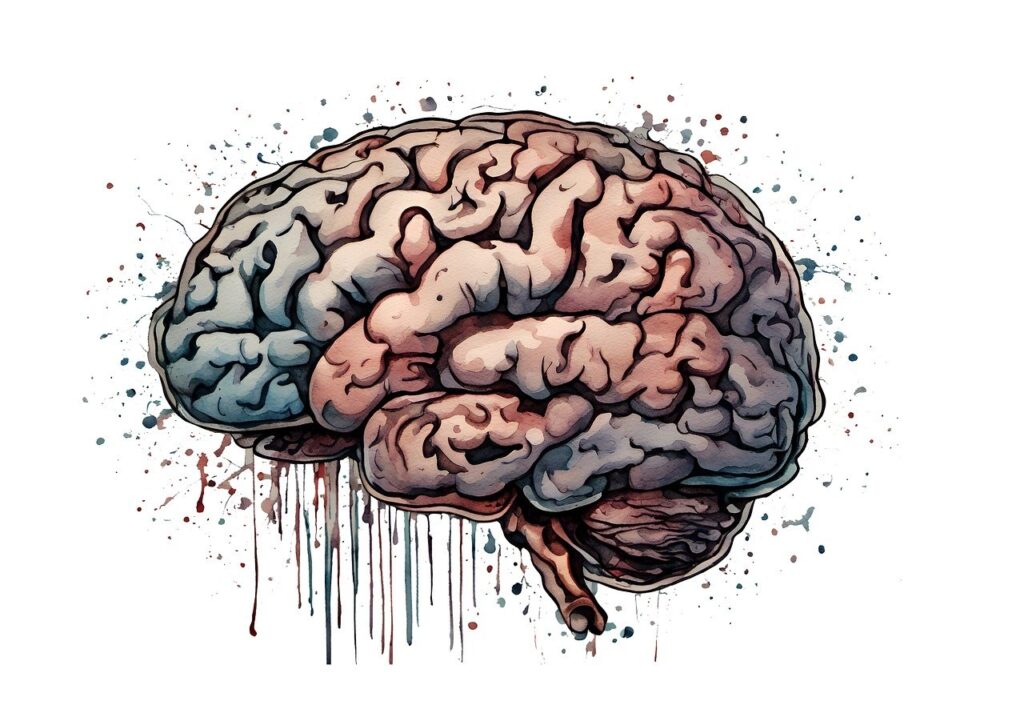SPOILER ALERT!
~ The periacqueductal gray (PAG) is a small structure in the mid-brain that plays an important role in triggering panic attacks
~ PAG is the site of the suffocation alarm: fear of suffocation in the absence of real threat to respiratory function
~ Dysfunctional serotonin system and endogenous opioids promote the suffocation alarm and hence panic attacks
Studies implicate the periacqueductal gray (PAG) in the genesis of panic attacks. The PAG is an area of gray matter (i.e., neurons, which are brain cells) that is located in the midbrain. It has been involved in the inhibition of pain and the production of fearful and defensive reactions.
For example, structural imaging studies show that the relative volume of the dorsal midbrain (i.e., area of PAG) is larger in the panic disorder group compared to healthy controls, and furthermore the size of that brain region is positively correlated with the severity of panic disorder (i.e., increased size = increased severity). In addition, results from functional imaging studies (i.e., imaging studies that measure changes in metabolism, blood flow, and chemical composition in a particular area) indicate that anxiety activates the forebrain and inhibits the PAG, while panic stimulates the midbrain and inhibits the forebrain.
The Role of Serotonin and endogenous Opioids in Panic Attacks
Serotonin (i.e., a brain chemical that balances moods and promotes relaxation), which operates in the PAG, is believed to be a crucial player in the pathophysiology of panic disorder. More particularly animal and human studies consistently demonstrate that the deficient serotonergic inhibition of neurons in this brain region is linked with panic attacks. In other words, serotonin does not effectively inhibit neurons in the PAG from firing, which in turn potentiates the panic response.
Similarly, endogenous PAG opioids (i.e., naturally occurring opioids) have also been implicated in the precipitation of panic attacks, suggesting that the PAG is the site of the suffocation alarm system. More specifically, several studies have shown that endogenous opioids are activated during hypoxia (i.e., low oxygen levels) and hypercapnia (i.e., high carbon dioxide levels in the blood) to decrease respiratory sensitivity to carbon dioxide and increase survival under those conditions. However, in panic disorder there is a functional deficit of the endogenous opioid system which deprives the individuals of a buffering defense against sensitivity to the suffocation alarm.
Thus, it is the interplay between the serotonin and opioids systems in the PAG that elicits the anti-panic actions of those agents. Notably, there is empirical evidence from both animal and human studies showing that the anxiolytic action of serotonin in the PAG requires local endogenous opioids.
Reference:
Graeff F. G. (2012). New perspective on the pathophysiology of panic: merging serotonin and opioids in the periaqueductal gray. Brazilian journal of medical and biological research = Revista brasileira de pesquisas medicas e biologicas, 45(4), 366–375. https://doi.org/10.1590/s0100-879×2012007500036

